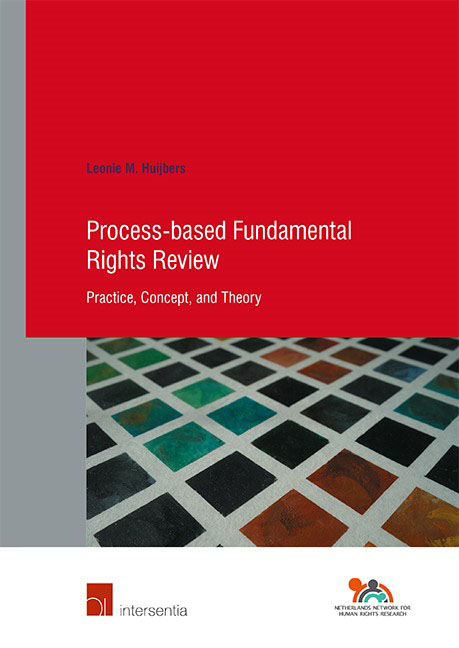Book contents
- Frontmatter
- Acknowledgments
- Contents
- List of Abbreviations
- INTRODUCTION
- PART I THE PRACTICE OF PROCESS-BASED FUNDAMENTAL RIGHTS REVIEW
- PART II THE CONCEPT OF PROCESS-BASED FUNDAMENTAL RIGHTS REVIEW
- PART III THE THEORY ON PROCESS-BASED FUNDAMENTAL RIGHTS REVIEW
- CONCLUSION
- Addendum: Questions for ECtHR Judges
- Summary
- Samenvatting
- Bibliography
- Official Documents
- Case-Law (by Jurisdiction)
- Case-Law (by Name)
- Curriculum vitae
- Human Rights Research Series
- Index
Introduction to Part II
Published online by Cambridge University Press: 11 November 2021
- Frontmatter
- Acknowledgments
- Contents
- List of Abbreviations
- INTRODUCTION
- PART I THE PRACTICE OF PROCESS-BASED FUNDAMENTAL RIGHTS REVIEW
- PART II THE CONCEPT OF PROCESS-BASED FUNDAMENTAL RIGHTS REVIEW
- PART III THE THEORY ON PROCESS-BASED FUNDAMENTAL RIGHTS REVIEW
- CONCLUSION
- Addendum: Questions for ECtHR Judges
- Summary
- Samenvatting
- Bibliography
- Official Documents
- Case-Law (by Jurisdiction)
- Case-Law (by Name)
- Curriculum vitae
- Human Rights Research Series
- Index
Summary
PROCESS-BASED FUNDAMENTAL RIGHTS REVIEW: WHAT'S IN A NAME?
Part I has demonstrated that process-based review in fundamental rights cases is applied by courts from all over the world in a variety of ways. In the literature attention has also been paid to various forms of procedural reasoning. Indeed, one academic even notes the existence of a ‘cross-national procedural phenomenon’ in judicial review. Various definitions and terminologies have been put forward, including ‘participation-oriented, representation-reinforcing approach to judicial review’, ‘semiprocedural review’, ‘ procedural rationality review’, and ‘ procedural proportionality review’. The variations in these terminologies and the different applications of procedural reasoning inevitably lead to the question: what exactly is process-based fundamental rights review? The answer to this conceptual question is essential because our understanding of what constitutes process-based affects our views on its normative value and the desirability of its application. Before discussing the value of procedural reasoning in fundamental rights cases, it is essential therefore to be clear as to what we mean by process-based fundamental rights review. It is the aim of Part II to provide such clarity.
METHODOLOGY AND METHODS OF PART II: SIMILARITY, DIFFERENCE, AND REFLECTIVE EQUILIBRIUM
Looking into the similarities and differences between different understandings of procedural reasoning is a useful way to grasp what is meant by it. In the words of Mitchel de S.-O-l’E Lasser, ‘the intellectual constructs of similarity and differences [should be deployed] in such a way as to generate or provoke productive insights into the objects of her analysis’. Hence, for a proper understanding of process-based fundamental rights review it is necessary to reflect on the similarities of the examples provided in Part I – what makes them examples of procedural reasoning? Chapter 5 looks for a common core and provides a definition of ‘p rocess-based review’ and ‘p rocess-based fundamental rights review’. At the same time, and just as importantly, a conceptual understanding of procedural reasoning should account for the dissimilarities between the applications of process-based review. As the Reflection to Part I explained, procedural reasoning can be applied by different courts, in different kinds of cases, and in relation to different kinds of rights. Chapter 6 accommodates these varieties by providing an overview of the diverse ways procedural reasoning can be applied.
- Type
- Chapter
- Information
- Process-based Fundamental Rights ReviewPractice, Concept, and Theory, pp. 89 - 92Publisher: IntersentiaPrint publication year: 2021

